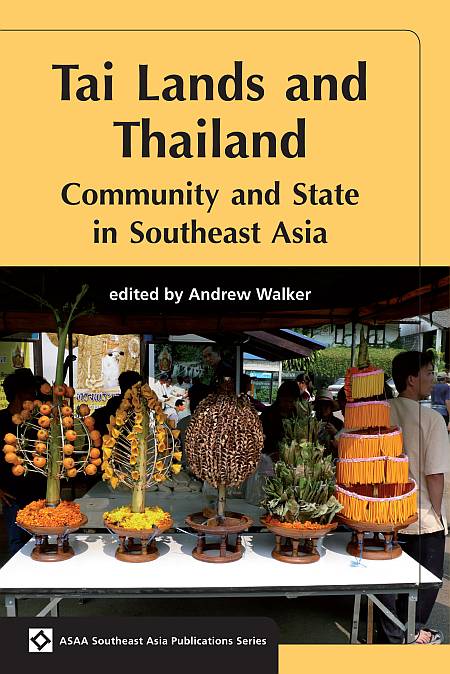I am delighted to announce the publication of Tai Lands and Thailand: Community and State in Southeast Asia. It has been published by National University of Singapore Press, NIAS Press, and University of Hawaii Press. The book is the result of research collaboration that has been going here at the Australian National University over the past six or so years. It features chapters by myself, Craig Reynolds, Nicholas Farrelly, Holly High, Sarinda Singh, Warren Mayes and Antonella Diana (all of whom have made previous contributions to New Mandala). Here are the opening paragraphs from the first chapter, “Modern Tai Community”.
This book provides a new approach to the study of community in the Tai world of mainland Southeast Asia.
Much of the current ethnographic work in the Tai world is constrained by a conceptual framework that associates community with tradition, locality and subsistence economy. This traditional community is commonly portrayed as being undermined by the modern forces of state incorporation, market penetration, globalisation and population mobility.
In this volume, we take a very diff erent view. We challenge the widely held view that community is a traditional social form that is undermined by modernity. Using case studies from Thailand, Laos, Burma and China, we explore the active creation of ‘modern community’ in contexts of economic and political transformation. Our aim is to liberate community from its stereotypical association with traditional village solidarity and to demonstrate that communal sentiments of belonging retain their salience in the modern world of occupational mobility, globalised consumerism and national development.
Our focus is on the Tai world, made up of the various peoples who speak Tai languages. The largest groups are the Thai of Thailand, the Lao of Laos, the Shan of Burma and the Dai of southern China. Of course, each of these categories is problematic; they are all the modern products of historical circumstance rather than being natural or self-evident ethnic groups. There are certainly linguistic and cultural similarities that justify the shared label ‘Tai’ but this must be treated as a preliminary delineation of a field of interest without rushing to assumptions about a common identity or a sense of shared history. Indeed, our primary goal is to critically examine contemporary notions of belonging in this Tai world.
Here is the table of contents.
Tai Lands and Thailand is part of the Asian Studies Association of Australia Southeast Asia Series. Special thanks to the staff at NUS Press for a great job on producing a very attractive volume!
 Facebook
Facebook  Twitter
Twitter  Soundcloud
Soundcloud  Youtube
Youtube  Rss
Rss 